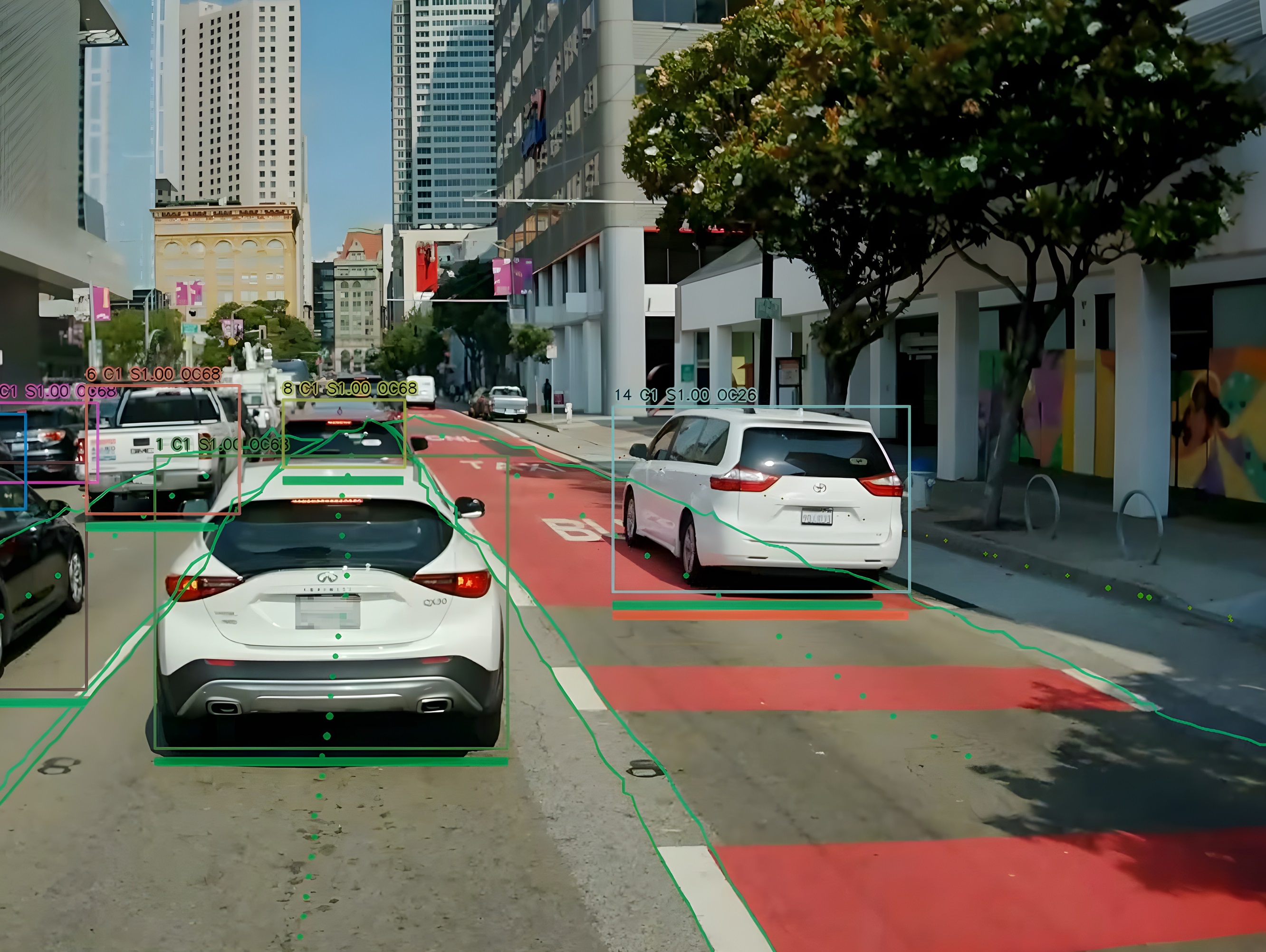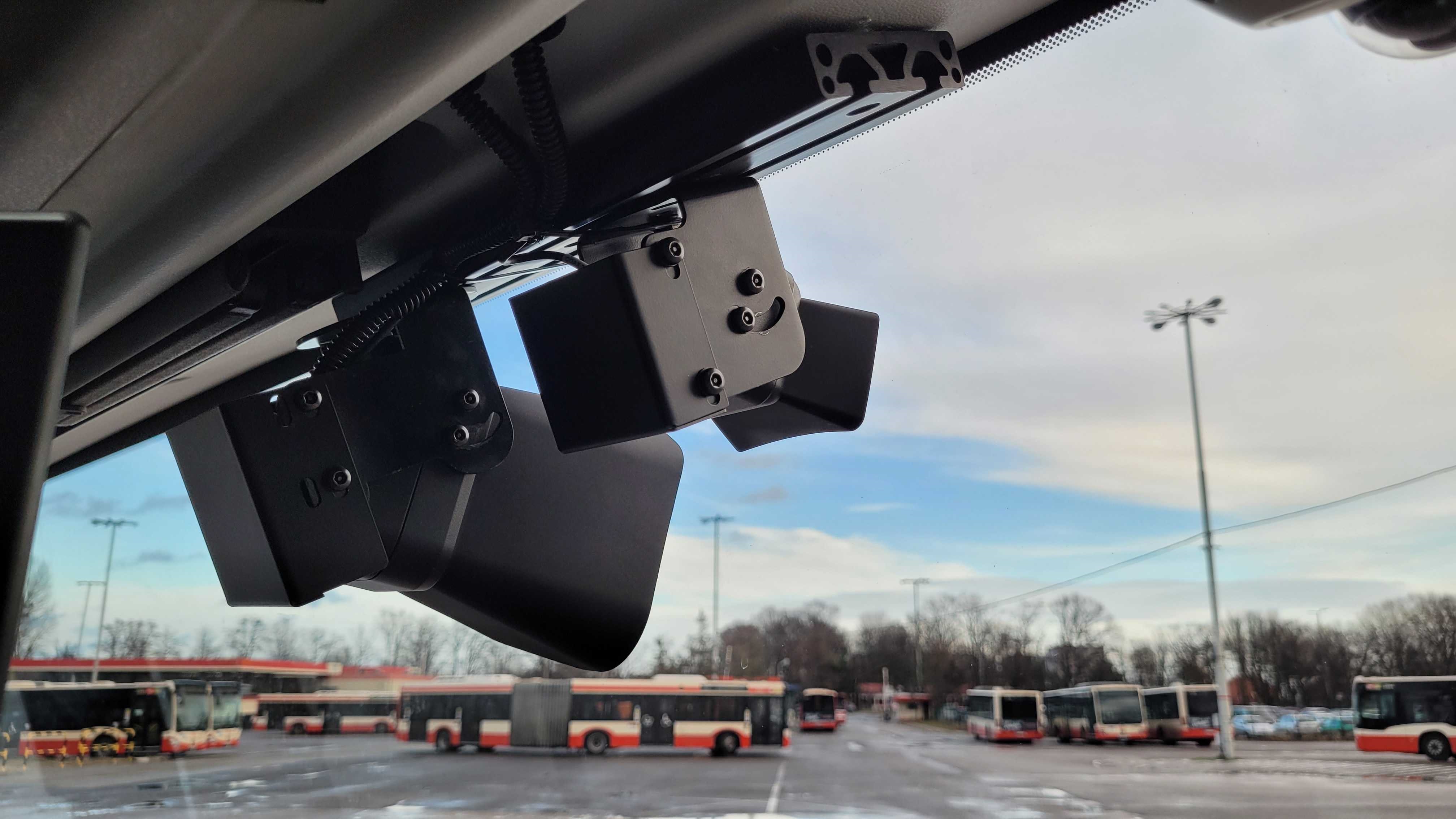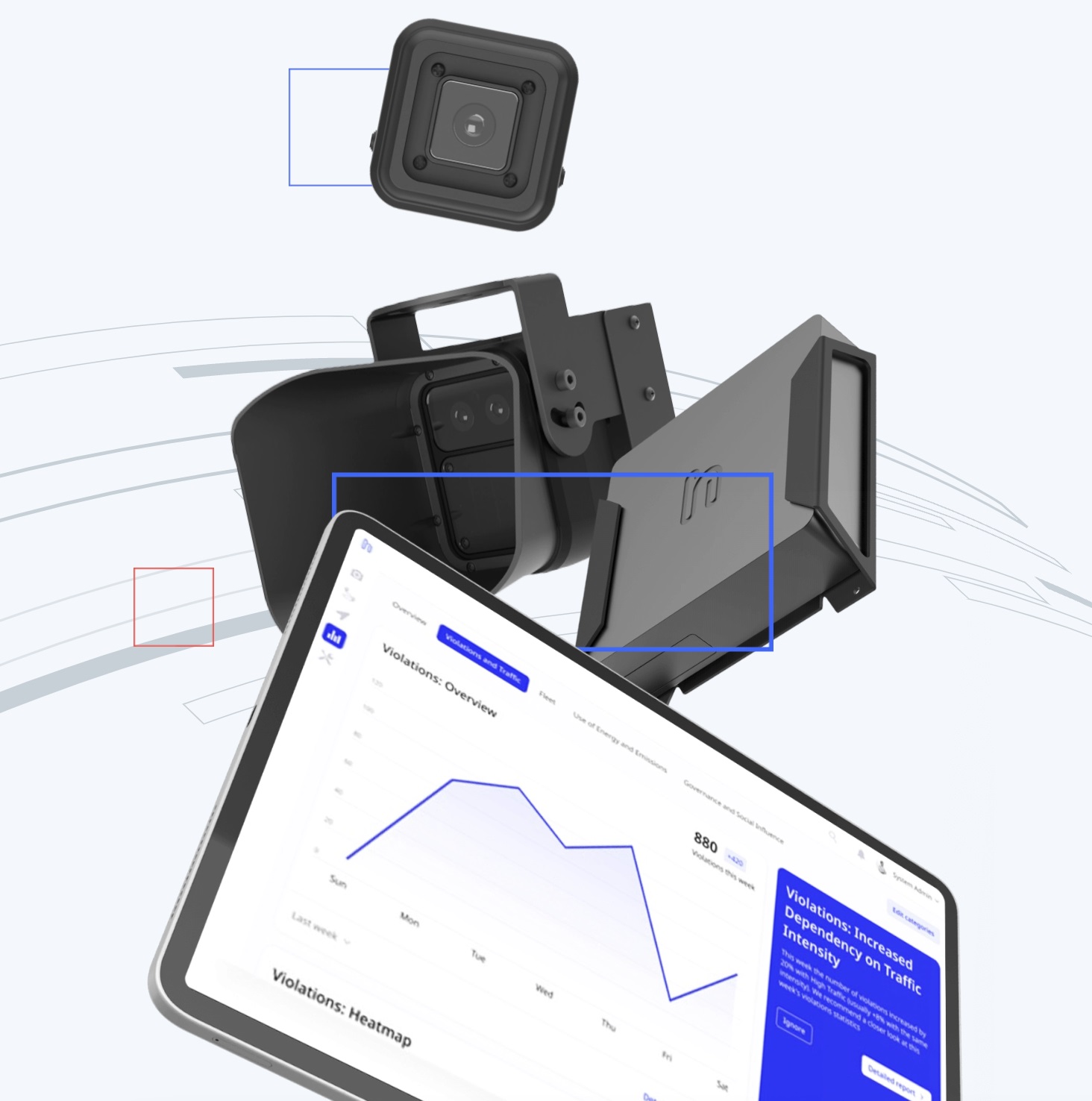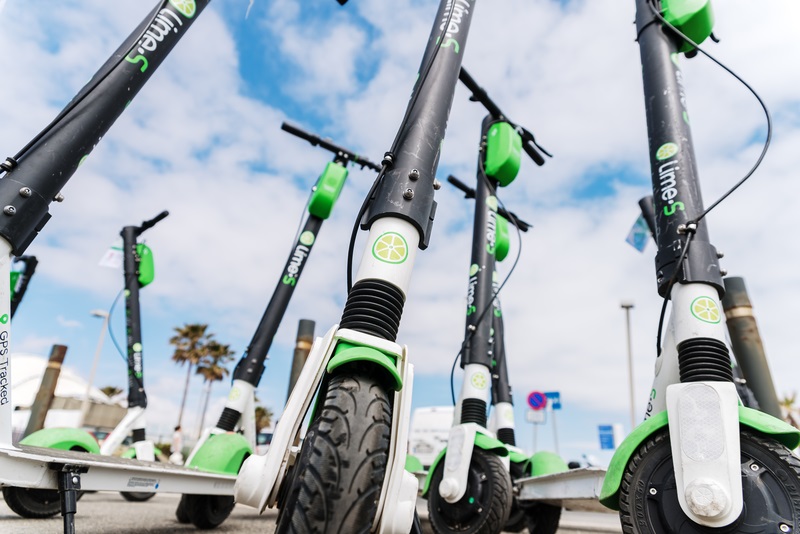
Every business has its origin story. Chris Carson, CEO of Hayden AI, was on a bus in San Francisco when he noticed the driver regularly taking his hand off the steering wheel to reach up and hit a button on a camera that was in the window.
Ironically, these cameras are often monitoring driver behaviour to make sure they’re not distracted – but every time a car was parked in front of him, causing an obstruction for the bus, the driver was pushing the button to index the video.
“And so here he is, driving a bus of passengers, and not just having to focus on driving, but also having to focus on hitting a button on a camera device,” recalls Carson. “My first thought was: we could use AI to automate that. And that was, essentially, the genesis of the idea. We could build a mobile device, using AI, that would be much more scalable than fixed cameras.”
Fast forward to now and Hayden AI’s mobile perception platform is installed on transit agencies’ buses to identify cars which, for example, have parked in a bus lane, slowing down commuters.

Earlier this year, the company signed an agreement with transit analytics specialist Snapper Services, whose Mosaiq Insights solution presents on-time performance data so that authorities and operators can pinpoint their priority areas for network improvement. The synergies are clear: the partnership is “really around enhancing data analysis for public transit providers”, Snapper CEO Miki Szikszai explains.
“Mosaiq Insights is all about making it easy for transit authorities and operators to understand where delays are happening in the network and it does all of that heavy lifting to analyse on-time performance, then presents it back to the user with intuitive dashboards to help transit authorities and operators pinpoint where are the highest-priority areas for improvement.”
Understanding exactly what might be causing problems is vital. “That's really where we see Hayden AI coming in,” says Szikszai. “Its vision AI platform gives transit agencies a highly location-accurate understanding of where illegal parking obstruction is occurring, particularly around bus lanes and bus stops. And so using those two together, authorities can basically pinpoint low-performing services and strategically deploy these leading-edge solutions to change road behaviour and improve bus on-time performance. It really is around tying those two things together, and allows operators and authorities to make targeted, effective and continuous changes to the network, rather than having to go through this whole thing which people seem to want to do, which is take five years to do a full overhaul fleet plan - they can just get in and do it now.”
Improving the passenger experience is the ultimate aim.
AI ‘before it was cool’
Artificial intelligence is, of course, having some time in the sun at the moment. “Why is everybody talking about AI? We had ‘AI’ in our name before it was cool,” smiles Carson. “It's really interesting, the hype curve that's taking place with AI. There are a bunch of different breakthroughs that are taking place right now. We're technologists and AI is at our core. That being said, we're also trying to be very focused on bringing something that is practical and that delivers real value. And often, in a lot of these different technologies or hype cycles, you'll find that nothing real gets delivered that changes people's daily lives. It is a tool, and we've got to find practical applications for it.”
Starting with customer problems and working out how to build tools and capabilities to improve those experiences is particularly important in public transport, says Szikszai. “It affects so many people and it's so up front and in the middle of the cityscape, whatever you do has to be evidence-based and reliable. And I think what we're seeing here is this ongoing evolution of a trend towards basically people using the data that they have and collecting that data and applying all sorts of different technologies to effectively enable good decisions to be made out on the street day to day. Anything that we think can be done to empower those planners and depot managers and city managers to do those things really makes sense.”
“The power of AI is being able to capture data, build bigger, better models, and create insights and situational awareness” Chris Carson, Hayden AI
Hayden AI operates in, among other places, Downtown Manhattan in New York: “A lot of the routes that we're on are quite challenging,” Carson says. “Every route has its unique characteristics. We have architected the system in a way that uses 3D mapping layers, and mapping layers as a super-sensor into the device. And by doing so, we can get down to the pixel level of each route. And so very clearly, we can annotate that route, and that annotation tells the device what to enforce. Just from a technology point of view we built something that's really sophisticated and robust, to be able to solve the most difficult challenges on any route. I think that that what else is really interesting is that it is a mobile platform. And thus far, you really haven't seen companies with a mobile enforcement platform - they're typically fixed.”

As well as capturing temporal data, the cameras also capture spatial data “that I think is very valuable to companies like Snapper”, Carson adds. “We wanted to do something that was a lot more innovative, because we're very interested in that geospatial data we can capture and how we can use that to allow cities to make more informed decisions, creating that smart city intelligence.”
It's not only about enforcement. As air quality becomes a real issue for urban areas worldwide, for instance, Carson suggests there is a role for the technology in decarbonisation - helping city agencies to mitigate the effects of public transportation emissions.
“By making buses run more efficiently, they spend less time idling, which helps reduce CO2,” he says. “And it can be quite significant. We see that buses spend about 50% of their time idling either at a bus stop, which makes sense, or a stoplight, which makes sense. But the other 50% of that time it's idling because it's stuck behind another vehicle. So that's just sitting there producing CO2. And so if we can move those vehicles out of the way, and speed those buses up, we can reduce the CO2 that they generate. But there's a secondary effect here, which is that as you speed buses up and more people ride the buses, they'll use [fewer] forms of transportation that are less efficient.”
Frequent and reliable
If public transport is efficient, then the lure of the private car becomes less appealing, Szikszai agrees. “Making sure that your transit network is frequent and reliable means that as a user, you go: ‘Okay, I know I can walk out the door and I can basically get to my endpoint without having to think about it - and I know I'm going to get there.’ That is the key. Once people do that, it obviously makes the case for adding more capacity to the network.”
Technology like Hayden AI’s can then help to make the case for dedicated bus lanes, for example, making city planning more responsive to people’s needs. “But you have to get that base service frequent and reliable so that people can use it,” Szikszai insists.
While reluctant to comment specifically on the surprising demise of New York City’s proposed congestion charge, Carson says that European-style low-emission zones approach the issue of congestion from a slightly different direction. “That would have been a really interesting way to market it [in New York] as more of an opportunity to reduce emissions within the city. But certainly there's synergy between what we do and what congestion pricing in hopes to achieve.”

Szikszai thinks the UK capital set the blueprint for tackling the issue. “The approach taken by London was very clear: make the existing public transit system great before introducing a charge so there is a genuine alternative for those customers. We're seeing cities around the world really struggling with peak traffic flow - but often it only takes moving 1-2% off that peak to basically move from something that's stopped to something that's moving.”
Humans being what we are, persuasion is needed. “I think the reality is in some places there needs to be an incentive and there needs to be also a disincentive to using some of these services - or to push people into using their vehicle at different timeframes,” he continues. “It's a reality of the fact that we have increased urbanisation around the world: more people in the same constrained space, all with large single-occupant vehicles - something's got to give.”
“We have increased urbanisation around the world: more people in the same constrained space, all with large single-occupant vehicles - something's got to give” Miki Szikszai, Snapper
Moving forward, Carson expects his company’s technology to have myriad potential applications for cities, beyond public transit. Hayden AI’s vision platform is not only restricted to bus-lane enforcement. “What we're really focused on is the data collection and what we can do with the data - enforcement is just a data set,” he points out. “But there's a whole lot of other data sets out there that could be very important. We’ve focused on enforcement because it's a way to get a supercomputer inside vehicles: today, it’s transit buses; tomorrow, there'll be other vehicle types like street sweepers, garbage trucks, school buses - and even police cars.”
All of these vehicles travelling on different routes and streets could provide useful information, “a data network effect” which can be shared across agencies.
“That’s really our bigger vision,” he says. “Buses is just the first vehicle type. The power of AI is being able to capture data, build bigger, better models, and create insights and situational awareness. There's a whole host of applications. To build one device that is robust enough to identify multiple traffic violations, I think is pretty cool.”
For Snapper, by contrast, the focus will remain squarely on public transit performance, Szikszai explains: “How far can we go in terms of actually making that visible to planners? As we work with more partners like Hayden, we’re building this richer and richer and richer picture that enables planners and city managers and anyone who's involved in that public transit experience to be able to look at the performance of their network in the morning and go: ‘Oh, I'm going to make this change for the afternoon.’ And it's those kinds of things that just reflects the dynamic nature of that service. We have plenty to do in that area; there is loads more to go.”












